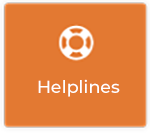UP2US Lesson 3: Like/Dislike

This lesson will allow students to consider what one should do to prevent bullying and cyber bullying.
- +Curriculum Links
- Junior Cycle SPHE Short Course Strand 3:
Anti-bullying: Develop guidelines for promoting an inclusive environment and collective responses to bullying; examine the roles of the participants and bystanders in incidents of bullying.
Additional learning outcomes:
Strand 4: Dealing with tough times. Highlight coping strategies for managing life’s challenges.
Strand 1: My rights and the rights of others. Discuss the importance of respectful and inclusive behaviour in promoting an environment free from bias and discrimination. - +Resources and Methodologies
- Resources: Case studies, Poster paper and colouring utensils, Copies of worksheets 3.1 and 3.2
- Methodologies: Scenario analysis, Group brainstorm, Polling
- +Learning Outcomes
- Learning outcomes: Students will have a better understanding of the persistent nature of the internet and the ramifications this has for bullying. Students will have agreed on some common guidelines that should be followed to stop cyber bullying. Students will have created a leaflet with the dos and don’ts (in this case the ‘likes’ and ‘dislikes’) of cyber bullying.
- +Key Skills
- Managing myself, Staying well, Communicating, Being creative, Working with others, Managing information and thinking, Literacy
- +Teachers' Note
- Activity 3.2: Feel free to choose the case studies that address issues which are most relevant to the class. Avoid using case studies that might upset or expose a particular student to bullying. Case Studies 3 and 5 are intended to be accessible for weaker readers.
- +Activity 3.1 - Exploring the nature of the internet through a game (7 minutes)
- STEP 1: Give students a copy of the Worksheet 3.1. Tell students they have only two minutes to complete the task and that it’s really important that they get it done on time. If you like you might make a competition of the task and offer a prize of a bar of chocolate for the person who completes the sheet first.
- STEP 2: While students are trying to complete the task, do various things to interrupt them. For example: ask them questions; ask them to hop up and down on the spot; ask them to close their eyes; play distracting music. Do everything you can so that the students can’t complete the task in time.
- STEP 3: Afterwards, ask the students how this experience made them feel.
How did this experience make you feel?
Suggested answers:
I felt confused because the behaviour was out of character and seemed unprovoked.
I felt frustrated and annoyed because I couldn’t get on with my work.
I felt upset because I felt I was being picked on.
I felt embarrassed by the public nature of the actions
I was made do.
I found the experience entertaining and a bit bizarre.- STEP 4: Explain to them that this is similar to how the internet can invade all aspects oftheir lives. Then ask them to reflect on the following question. They can also use emoticons to answer.How would you feel if you were constantly being interrupted by a stream of bullying comments?Suggested answers:
I would feel very insecure about who I am and would start to doubt everything I know to be true.
I would feel threatened and upset.
I would feel embarrassed, especially if the bullying was done in a public forum.
I would feel tense and unable to relax, even at home.
I would feel depressed and worthless because the bullies must have targeted me for a reason.
I would feel angry that I was being picked on.
I would feel confused about what I had done to provoke such an attack.
Key words: Suggest key words to prompt students, where necessary. Students should have the freedom to contribute to the Effects of Bullying poster at this point
Worthless
Insecure
Embarrassed
Humiliated
Depressed
Tense
Sick
Angry
Frustrated
Confused
Defiant
Bold
Unpopular
- +Activity 3.2 - The likes and dislikes of cyber bullying
- STEP 1: Divide each class into groups of four or five. Each group should be given a case study (see Worksheet 3.2) and asked to give advice on how to stop or prevent the bullying in that particular case.
Q. How could bullying be stopped or prevented in this case? Refer to both behavioural and technical steps that should be taken.
Suggested answer:
Behavioural steps
If the person who is being bullied feels safe doing so, they should first try to resolve the issue by speaking with the person who has been bullying them. They should explain that they haven’t been happy with what has been said or done and would like to know what’s going on. Sometimes it’s possible that text messages might be misinterpreted or that online content is created in a hurry and without much thought or care for other people’s feelings. If the person who has been bullied chooses to speak with the bully first, it is important that they don’t act in a bullying manner themselves.If such an encounter doesn’t put an end to the bullying, it is important that the person then seeks help. A teacher, older mentor or sometimes a guidance counsellor or chaplain might be the best person to go to. These people can help mediate a reconciliation and resolution to the problem or might be best placed to direct the person to more appropriate support services. If the bullying case involves threats, it might be necessary to seek the help of the Gardaí.Technical steps:
Save the bullying messages as evidence for investigation. This can be done by taking screenshots.Report the content for abuse to get bullying content removed from social-networking sites.Increase the privacy settings on your social networking account to get more control over content posted about you online.Disable the option of posting anonymously to your social-networking account to make it easier to know who’s involved in bullying cases.Block people online to prevent unwanted bullying interactions with particular individuals.
It’s also possible to get mobile-phone companies to block certain numbers.Change your password to prevent hackers from gaining access to your social networking account.
After working in their groups for five minutes, the groups should read their responses to the larger group. Feedback should be taken on the board and categorised
into dos (likes) and don’ts (dislikes).
- +Activity 3.3 - Making an anti-cyber bullying advice leaflet (10 minutes)
- STEP 1: Using information from the discussion, each student should then begin to compose the text for their own advice leaflet on stopping or preventing cyber bullying. The advice leaflet should be targeted at fellow students and should give both behavioural and technical tips for beating cyber bullying. The different organisations that students researched for Activity 2.4 should also be included on the leaflet. The leaflets will not be completed until after the next class but should eventually all be stuck over the Effects of Bullying poster. This action should symbolise how the students can work together to end the effects of bullying.Assessment: Creating an advice leaflet is a suggested assessment task as it meets a number of the learning outcomes of this section of the SPHE course.Note: You might want to use some of the memes and information on watchyourspace.ie/resources






